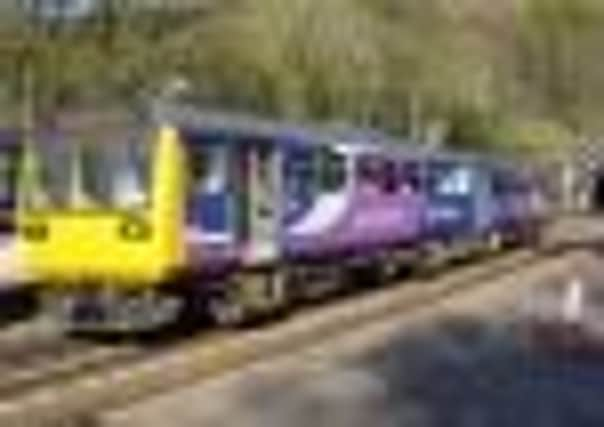Safety fears over fleet of ageing trains for Yorkshire network


Northern Rail operates 95 elderly Pacers in the North, including across the Yorkshire rail network, and the number is set to grow in December when the company receives a further 50 carriages that have been allocated by the Department for Transport.
Seven of the additional carriages will be Pacers that are being transferred from the South-West, and although there is no suggestion the trains are currently unsafe, their prolonged use has alarmed national rail watchdog, the Office of Rail Regulation (ORR). In its annual health and safety report, the regulator said: “We are particularly concerned about the use of Pacers beyond their intended design life and we will be carefully scrutinising the industry’s plans for ensuring they can continue to be used safely.”
Advertisement
Hide AdAdvertisement
Hide AdIt said there have been some “notable incidents”, including the failure of drive shafts that transmit power from the engine to the wheels.


The Pacers were built between 1985 and 1987 by British Leyland, and are essentially a bus body mounted on a freight wagon with a diesel engine slung underneath. They were intended as a stop gap and had an expected life span of 25 years, the regulator said.
In Yorkshire, the trains are used on commuter services around Leeds, Sheffield, Huddersfield, Harrogate, Wakefield and York, and on the coast line between Scarborough and Hull.
Transport Minister and Scarborough MP Robert Goodwill said stringent maintenance schedules should be carried out to compensate for the fleet’s age.
Advertisement
Hide AdAdvertisement
Hide AdHe added: “It’s disappointing they are not intending to replace some of this old rolling stock, and obviously if they do continue with these old trains they need to make sure the maintenance programme is sufficiently intensive to ensure safety and reliability.
“Running old trains in itself is not necessarily a bad thing – Grand Central run some very old trains on the East Coast Main Line and put new engines in and carried out extensive refurbishment work.
“They do need to compensate for the fact they are running older trains by having a very intensive maintenance schedule. I hope the ORR will ensure that the vehicles are maintained to the very highest standard.”
He added: “Certainly from a passenger point of view, safety is paramount and reliability is vital. If they start to lose reliability and run late people will give up on trains and use their cars and that’s not what we want to see.”
Advertisement
Hide AdAdvertisement
Hide AdBut Maria Eagle MP, Labour’s Shadow Transport Secretary, said investment in new rolling stock was long overdue.
She said: “Instead of scaling back vital investment, slashing the plans they inherited for new carriages, the Tory-led Government should bring forward plans for new rolling stock as part of a long-term plan for jobs and growth.
“As well as benefiting passengers in Yorkshire, this investment should be used to give a much needed boost to our train manufacturing sector which was sold down the river by the decision to build the new Thameslink trains in Germany.”
Industry experts said a lack of comfort was the main issue facing passengers on Pacers.
Advertisement
Hide AdAdvertisement
Hide AdThe editor of Today’s Railways magazine, Paul Abell, said: “I travelled on one yesterday going around Leeds and if they are on a very good track they are OK, but a lot of them are used on secondary lines where the track isn’t so good and at times they are particularly noisy, uncomfortable and draughty. They are the railway equivalent of an old banger.”
A spokeswoman for Northern Rail said: “Pacer trains have a good safety record and they, along with all the other types of train Northern operates, are subject to strict regular safety and maintenance checks.
“With the renewal processes that we have also undertaken, the mechanics of all these trains are no more than five years old. We have a safety certificate which embraces all operation and maintenance of our fleet of trains.”
Comment: Page 14